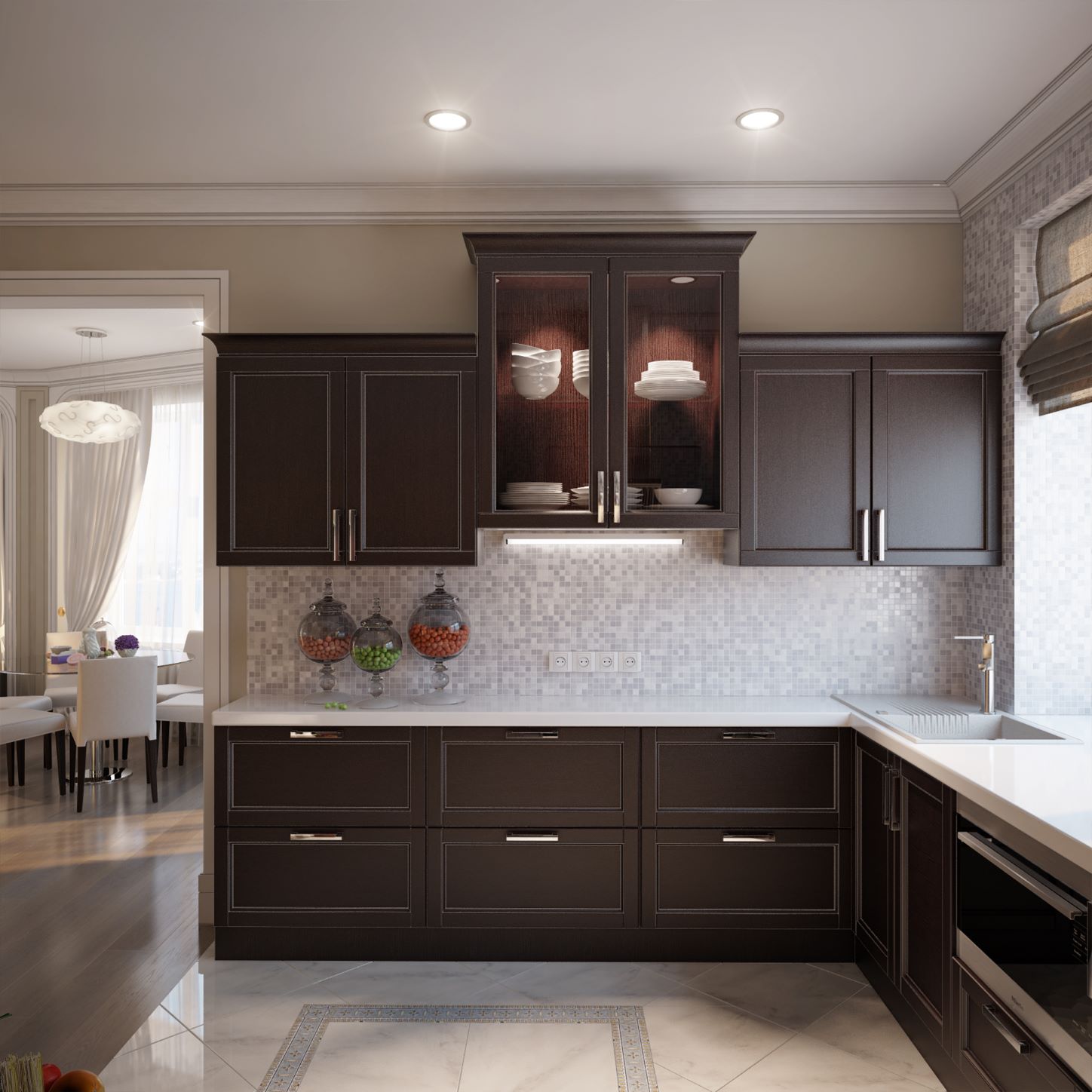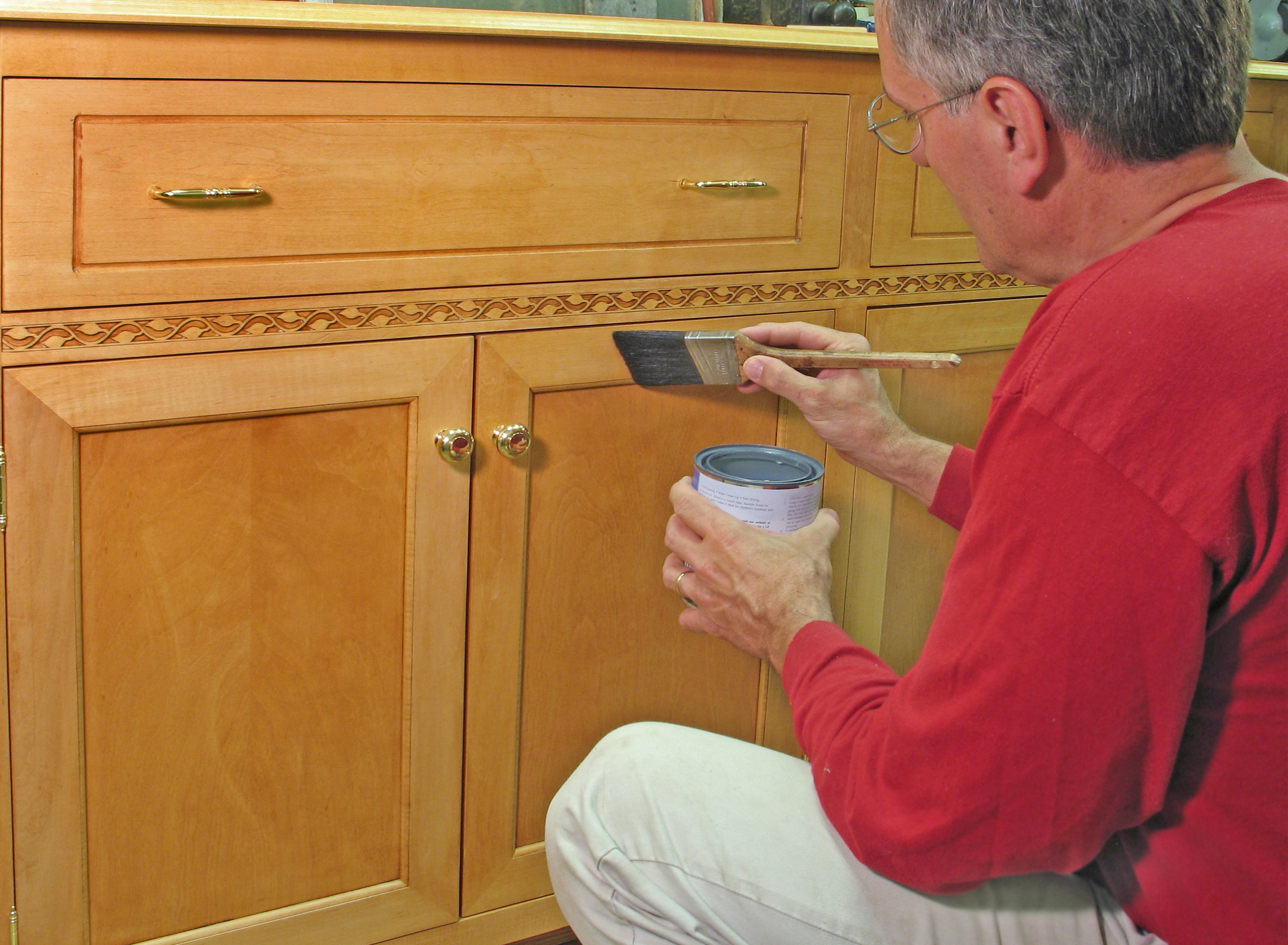Preparing Vinyl Cabinets for Painting

Proper preparation is paramount to achieving a durable and aesthetically pleasing finish when painting vinyl cabinets. A thorough cleaning and sanding process will ensure optimal paint adhesion and prevent peeling or chipping in the long run. This section details the necessary steps to prepare your vinyl cabinets for painting.
Cleaning Vinyl Cabinets
Thorough cleaning is the first crucial step in preparing vinyl cabinets for painting. Grease, grime, and other surface contaminants will significantly impede paint adhesion, resulting in a poor-quality finish. The following table Artikels a step-by-step cleaning process:
| Step | Cleaning Solution | Application Method | Notes |
|---|---|---|---|
| 1. Dust Removal | Tack cloth or soft brush | Gently wipe down all surfaces to remove loose dust and debris. | This initial step prevents the spread of dust during subsequent cleaning. |
| 2. Degreasing | TSP (trisodium phosphate) solution (follow manufacturer’s instructions for dilution) or a degreasing cleaner specifically designed for kitchen use. | Apply with a soft cloth or sponge, scrubbing gently to remove grease and grime. Rinse thoroughly with clean water and allow to dry completely. | TSP is a powerful degreaser, but always wear appropriate protective gear (gloves, eye protection). |
| 3. Spot Cleaning | Mild dish soap and water solution or a specialized vinyl cleaner. | Use a soft cloth or sponge to gently clean any remaining stubborn spots or stains. Rinse thoroughly with clean water and allow to dry completely. | Avoid harsh abrasives that could scratch the vinyl surface. |
| 4. Final Wipe Down | Clean, damp cloth | Wipe down all surfaces one last time to remove any remaining residue. Allow to dry completely before proceeding to sanding. | Ensure complete dryness to prevent paint dilution or adhesion problems. |
Sanding Vinyl Cabinets
Sanding creates a slightly roughened surface, improving paint adhesion. This step is crucial, even on seemingly smooth vinyl. Using the correct grit sandpaper is essential to avoid damaging the vinyl surface while achieving the desired texture.
How to paint vinyl cabinets – The sanding process typically involves using multiple grits of sandpaper, starting with a coarser grit to remove any imperfections and gradually moving to finer grits to smooth the surface. A common approach is to begin with 120-grit sandpaper, followed by 180-grit, and finishing with 220-grit. However, the specific grits may need adjustment depending on the condition of the cabinets. Always sand in the direction of the wood grain, if visible, to avoid creating scratches.
The following tools are necessary for sanding vinyl cabinets:
- Sandpaper (120-grit, 180-grit, 220-grit)
- Sanding block or hand sanding sponge
- Tack cloth
- Dust mask
- Safety glasses
Surface Preparation and Paint Adhesion
Proper surface preparation significantly impacts paint adhesion. Painting on a clean, properly sanded surface ensures the paint bonds effectively, resulting in a durable, long-lasting finish that resists chipping and peeling. In contrast, painting on a dirty or unsanded surface will likely lead to poor adhesion, causing the paint to flake or peel off prematurely, requiring costly repainting. For example, a kitchen cabinet painted on a greasy surface will likely show peeling within months, whereas a properly prepared surface will provide years of service.
Selecting and Applying Paint

The selection and application of paint are critical steps in achieving a professional-looking finish on your vinyl cabinets. Choosing the right paint type and employing proper application techniques will significantly impact the durability and aesthetic appeal of your refinished cabinets. Careful consideration of these factors will ensure a long-lasting and beautiful result.
Paint Type Comparison
The choice of paint significantly impacts the final outcome. Several types are suitable for vinyl, each with its advantages and disadvantages. The following table provides a comparison of common options:
| Paint Type | Pros | Cons | Suitability for Vinyl Cabinets |
|---|---|---|---|
| Latex | Easy cleanup with water, relatively low odor, durable, good adhesion | Can take longer to dry, may require multiple coats for full coverage, less resistant to scratches than enamel | Highly suitable, especially when using a high-quality, primer-included formula. |
| Acrylic | Water-based, low odor, fast drying, good flexibility, excellent adhesion | Can be more expensive than latex, may require more coats for full opacity | Excellent choice for vinyl, offering a balance of durability and ease of application. |
| Enamel | Extremely durable, scratch-resistant, provides a hard, glossy finish | Strong odor, requires solvents for cleanup, longer drying time, can be more challenging to apply evenly | Suitable but requires careful application due to its tendency to show imperfections. A high-quality primer is essential. |
Applying Paint to Vinyl Cabinets
Proper application techniques are crucial for a smooth, even finish. Thorough preparation, as discussed previously, is paramount before this stage.
The following steps Artikel the process:
- Step 1: Gather Supplies. This includes the chosen paint, a high-quality primer specifically designed for adhesion to vinyl surfaces, paintbrushes (various sizes for different areas), a roller (for larger surfaces), a paint tray, drop cloths, painter’s tape (for precise edges), fine-grit sandpaper (for smoothing any imperfections between coats), and cleaning rags.
- Step 2: Prime the Cabinets. Apply a thin, even coat of primer, following the manufacturer’s instructions. Allow ample drying time before proceeding.
- Step 3: Apply the First Coat of Paint. Use long, even strokes, working in the direction of the wood grain (if visible). Avoid overloading the brush or roller to prevent drips and runs. Allow the first coat to dry completely.
- Step 4: Sand Lightly (Optional). If necessary, lightly sand the first coat with fine-grit sandpaper to smooth out any imperfections. Wipe away dust with a tack cloth before applying the next coat.
- Step 5: Apply Subsequent Coats. Apply additional coats as needed to achieve the desired coverage and opacity. Allow each coat to dry completely before applying the next. Two to three coats are typically sufficient.
Ventilation and Drying Time, How to paint vinyl cabinets
Adequate ventilation is essential during the painting process to reduce exposure to paint fumes. Open windows and doors, and consider using a fan to circulate air. Allow sufficient drying time between coats, as specified by the paint manufacturer’s instructions. Rushing this process can lead to problems such as peeling or uneven finish. Generally, allow at least 24 hours between coats.
Avoiding Common Painting Mistakes
To avoid drips and runs, apply thin, even coats of paint, and avoid overloading your brush or roller. Work in small sections, and use a smooth, consistent technique. If drips do occur, address them immediately with a damp cloth before the paint dries. Using painter’s tape carefully along edges will prevent paint from bleeding onto unwanted areas.
Finishing Touches and Maintenance: How To Paint Vinyl Cabinets

Successfully painting vinyl cabinets requires a final protective layer and a commitment to ongoing maintenance. A clear coat sealant safeguards your newly painted surfaces from wear and tear, while consistent cleaning prevents damage and preserves the vibrancy of the paint. This section details the application of sealants and provides a comprehensive maintenance guide.
Clear Coat Sealant Application
Applying a clear coat sealant is crucial for extending the life of your painted vinyl cabinets. This protective layer shields the paint from scratches, chips, moisture, and UV damage, preserving its appearance for years to come. Several types of sealants are available, each with distinct properties. Water-based polyurethane is a popular choice due to its ease of application, low odor, and relatively quick drying time. Oil-based polyurethane offers superior durability and a harder finish, but carries a stronger odor and longer drying time. For a more environmentally friendly option, consider a low-VOC (volatile organic compound) sealant.
Before applying the sealant, ensure the paint is completely dry according to the manufacturer’s instructions. Lightly sand the painted surface with fine-grit sandpaper (220-grit or higher) to create a slightly textured surface for better adhesion. Wipe away any dust with a tack cloth. Apply the sealant using a high-quality brush or roller, working in thin, even coats. Allow each coat to dry completely before applying the next, following the sealant manufacturer’s recommended drying time. Two coats are generally recommended for optimal protection.
Cabinet Cleaning and Preventative Measures
Regular cleaning is essential for maintaining the beauty and longevity of your painted vinyl cabinets. Avoid harsh chemicals and abrasive cleaners that can damage the paint. A simple solution of mild dish soap and warm water is often sufficient for routine cleaning. For stubborn stains, try a paste of baking soda and water, gently scrubbing with a soft sponge or cloth. Always rinse thoroughly with clean water and dry completely with a soft cloth to prevent water spots.
The following points Artikel recommended cleaning products and procedures:
- Regular Cleaning: Use a solution of mild dish soap and warm water. Apply with a soft sponge or cloth, rinse thoroughly, and dry completely.
- Stubborn Stains: Create a paste of baking soda and water. Gently apply to the stain, scrub lightly, rinse, and dry.
- Grease and Oil: Use a degreasing cleaner specifically designed for painted surfaces. Follow the manufacturer’s instructions carefully.
- Preventative Measures: Avoid using abrasive cleaners or scouring pads. Use coasters and placemats to protect surfaces from scratches and spills. Keep sharp objects away from the cabinets.
Following these guidelines will help you maintain the beautiful finish of your newly painted vinyl cabinets for many years to come. Remember to always test any cleaning solution on a small, inconspicuous area first to ensure it does not damage the paint.
